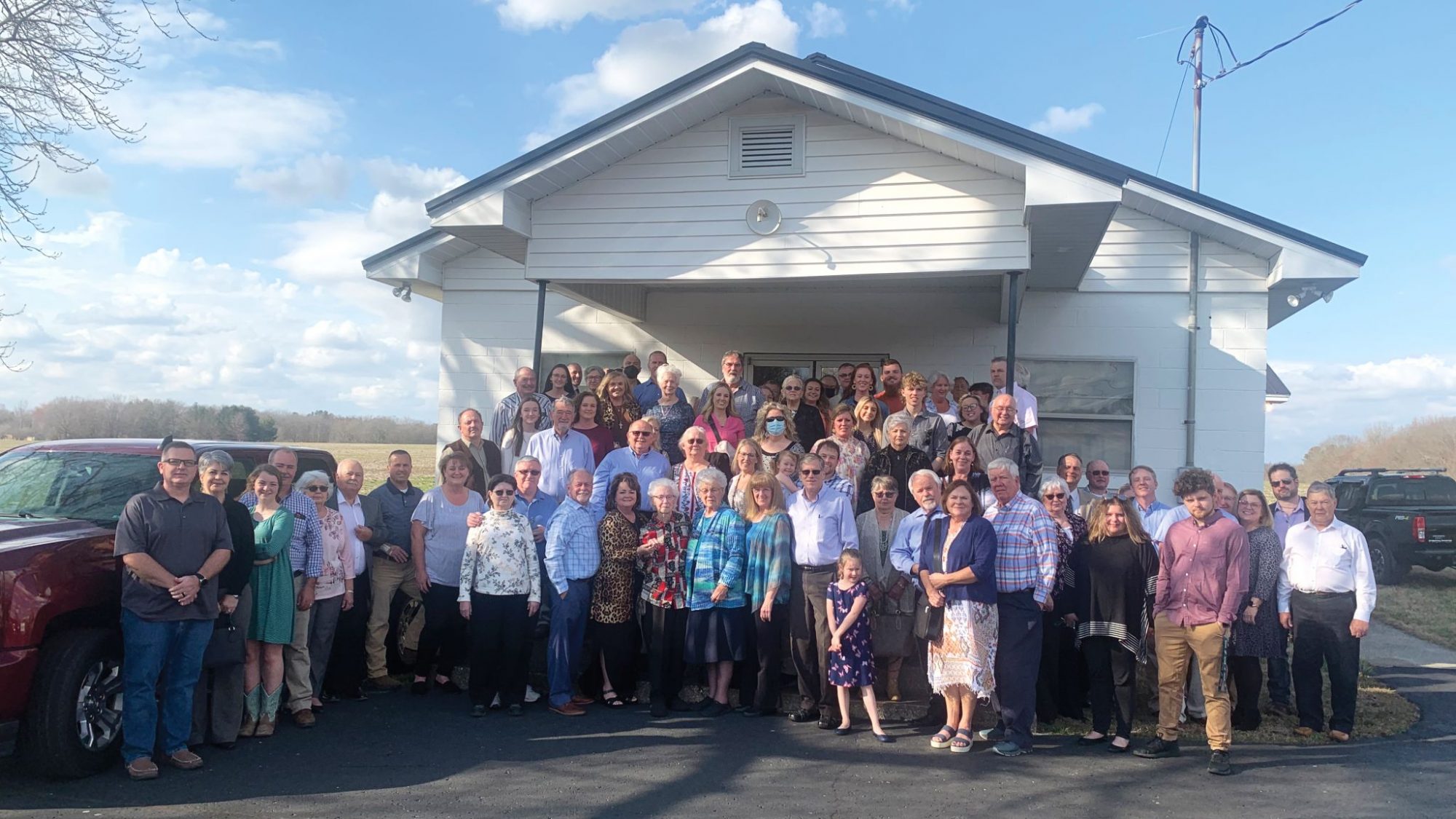A Life Cycle and a Legacy
A Life Cycle and a Legacy
Excerpt from A final song, a familiar end by Cheryl Mann Bacon for The Christian Chronicle
The final assembly of the Ragsdale Church of Christ was an old-time singing, the kind they used to have every fourth Sunday.
Charter member Elvie Sellers, 97, doesn’t get out often, and her family wanted a singing on that last Sunday so they could bring her one more time.
And so they sang. Old standards, sentimental favorites. Then about five minutes till three, Mike Sellers, Elvie’s son, took his place behind the oak table engraved with the words “In Remembrance of Me.”
After asking if any had been unable to partake of the Lord’s Supper that morning, Sellers carried the tray down the center aisle to his mother’s seat—two rows from the back—to serve her one more time.
A final prayer. One verse of “Blest be the Tie.”
And they were done.
Ragsdale, Tennessee used to be a community of its own; now it’s part of Manchester, on the edge of town. After exiting I-24 about an hour south of Nashville, the two-mile stretch of Ragsdale Road feels like a retreat in time.
The eighty or so people who came to sing on Sunday, March 6, represented twenty-one congregations from Coffee County, Tennessee, and adjacent communities, people who came to say goodbye to the church where family or neighbors or friends had once attended.
It had been a long time since that many folks filled Ragsdale’s white-block building. The week before, there were only eight, including the preacher. One member said, “It’s hard to operate and do any good when you’ve only got eight to ten people.”
The pastor attributes Ragsdale’s decline to location, societal changes, and economics. Young people have left the region seeking employment, and generational changes contribute as well.
A congregation that was thriving fifty years ago dwindled until closing its doors was the only option.
The church began as a “planter church” in the early 1950s; such churches were intended to take the gospel out of the county seats and population centers to smaller communities. The congregation met for a while in a school building, often with just a handful of women and one man who led singing, preached, and served Communion.
After a few years, a local family donated land to build the church building.
In the thriving years, the congregation supported at least three men as they prepared to become preachers.
Neat, handwritten entries in a worn red ledger from the 1970s detail other Ragsdale efforts—support for Samoa Mission, the East End church, and Sunny Acres children’s home.
The gathered congregation on that last Sunday were invited to “think of all the good. Remember that—all the good.”
A few years ago a young farmer bought the acreage adjoining the church. The land where the church building stands will become his as well in exchange for his donation to Churches of Christ Disaster Relief Effort Inc. The relief agency responds to major disasters in the U.S. by sending trucks of food, water, and supplies to local churches that aid disaster victims. After final expenses are covered, any remaining church funds will also go to the agency.
The building will be torn down, replaced by fields of corn or soybeans or maybe wheat.
One lifelong member said she hopes Ragsdale will be remembered as a congregation “that put all of our faith and trust and love into the Lord who we knew would be walking beside us every step we took—if we were walking like he had told us to do.”
The pastor concluded his final sermon by saying, “It’s my duty to encourage members to start worshipping in another congregation of your choice. We have plenty of places to worship our God, and we’ll go and worship regularly. We step into the annals of church history.”
People keep asking him, “What are you going to do?” he said.
“Well,” he replies, “I’m going to worship God every Sunday.”
This story is part of Lake Institute’s story collection, the Faithful Generosity Story Shelf, which highlights congregations and other religious organizations who have sought to use their assets and resources in creative—and sometimes surprising—ways as an expression of faithful giving.
Each entry in our Story Shelf is short enough to be read and discussed during a committee meeting or other group gathering. Our hope is that these accessible vignettes will spark new questions, conversation, and imagination among clergy and laity about what might be possible with the funds, buildings, land, and other resources in their care. If you know a story that should be included in the Story Shelf, suggest it here.
Subscribe
Insights, a bi-weekly e-newsletter, is a resource for the religious community and fundraisers of faith-based organizations that provides:
- Reflections on important developments in the field of faith and giving
- Recommended books, studies and articles
- Upcoming Lake Institute events

